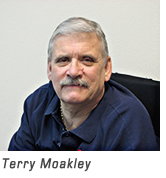 Even before the ADA was enacted, we had a growing number of accessible buses in New York City. When I needed to travel downtown for meetings with staff at the Office of Veterans Affairs or other agencies, I boarded an accessible bus just outside our office building’s main entrance, and on my return trip, the accessible bus stop was just across the street. It couldn’t have been more convenient.
Even before the ADA was enacted, we had a growing number of accessible buses in New York City. When I needed to travel downtown for meetings with staff at the Office of Veterans Affairs or other agencies, I boarded an accessible bus just outside our office building’s main entrance, and on my return trip, the accessible bus stop was just across the street. It couldn’t have been more convenient.
Wheelchair-accessible buses began arriving in New York City in 1981, primarily due to a lawsuit filed by this veterans organization in September of 1979 alleging planned outright violations of two New York State laws. One of these statutes—the State Public Buildings Law—stated very clearly that if a public building is newly constructed or substantially renovated, including public transportation stations and terminals, then accessibility had to be provided for all persons with disabilities.
New York City Transit’s first “Capital Improvement Plan” at that time called for purchasing 900 new
full-size buses, none of which would be wheelchair-accessible, and the substantial renovation of 32 existing subway stations without any disability access improvements whatsoever. By the time this lawsuit was settled officially in 1985, I’m guessing that there were well over 1,000 new wheelchair-accessible buses in operation, and today there are more than 80 wheelchair-accessible NYCT subway stations.
Using the accessible buses between 1981 and 1985 wasn’t always easy. One had to keep a sharp eye out to locate, on average, the one in five buses that was accessible. And you had to hope that the bus driver had been trained to operate the wheelchair lift and the wheelchair securement system.
But this veterans organization took a very positive approach with help from our friends in other city disability groups. We published a “How to Ride New York City’s Accessible Buses” guide that featured illustrations of the boarding/disembarking process, and we updated it four different times. We started a “Bus Driver Awards” program that gave consumers an opportunity to nominate a bus driver who went out of his/her way to provide excellent service to wheelchair users or others with disabilities. We operated this recognition program into the beginning of this century.
We trained many bus operators who formerly worked for private companies, known today simply as the Metropolitan Transportation Authority’s MTA Bus. We even duplicated and distributed “lift keys” to consumers upon request, so if an operator didn’t have his/her lift key on a given day, the consumer could let him/her use a borrowed key to operate the lift successfully.
For me personally, I used wheelchair-accessible buses frequently between their 1981 arrival and August of 1988 from our Park Avenue /East 29th Street “Midtown South” office to New York City’s Civic Center in lower Manhattan, Apart from meetings at the Veterans Affairs Office, there were City Council meetings and hearings at City Hall; meetings at the Mayor’s Office for People with Disabilities; and, meetings with the State Office of Advocate for the Disabled staff, and on just one memorable day, a meeting with then-Governor Mario Cuomo at Two World Trade Center. Once this organization moved its office to the Borough of Queens in 1988, taking three different bus lines to reach Civic Center simply would have wasted way too much work time.
Using wheelchair-accessible buses in the 1980s was relaxing and convenient because bus service in Manhattan during daytime business hours is frequent indeed. And finding an available on-street parking space in lower Manhattan during the day truly is the “trying to find a needle in a haystack” cliché.
Nowadays, when I drive my van to Manhattan for an occasional meeting, I typically either give myself a lot of lead time to find a parking space, or pay a king’s ransom to park it in a parking garage or lot. But if you live in, work in or visit New York City and a bus or subway ride will take you to your destination, I highly recommend New York City Transit’s accessible buses or subway stations.
Next and Final Installment: the author describes his public and private transportation experiences around the continent…it’s all good!
Terry Moakley
Chair of the VetsFirst Committee
——-
Our vets deserve greater access to transportation for work, school, medical care, other health services and recreation or leisure activities. Help make it happen!
Go to http://veteransdialogue.ideascale.com/ to participate in a national online dialogue sponsored by The Federal Coordinating Council on Access and Mobility and the U.S. Department of Defense. The dialogue, “Strengthening Transportation Choices So We Can Serve Those Who Have Served Their Country,” is for veterans, service members, their families, and community service providers. It will be open through June 8. Once you register, you’ll be able to share an idea, or comment or vote on someone else’s idea! The best ideas bubble up to the top.
